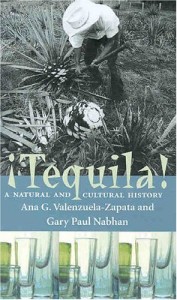 The past three decades have seen an astounding increase in the popularity of tequila, in the U.S. and worldwide. While consumption of hard liquor in the U.S. has declined by 22 percent in recent years, consumption of tequila has risen by 31 percent in the same period. The number of tequila brands marketed in the U.S. has doubled in five years. Today, 3,600 farmers supply agave to 50 distilleries in the Mexican state of Jalisco, home of tequila.
The past three decades have seen an astounding increase in the popularity of tequila, in the U.S. and worldwide. While consumption of hard liquor in the U.S. has declined by 22 percent in recent years, consumption of tequila has risen by 31 percent in the same period. The number of tequila brands marketed in the U.S. has doubled in five years. Today, 3,600 farmers supply agave to 50 distilleries in the Mexican state of Jalisco, home of tequila.
This is, the authors of Tequila! A Natural and Cultural History say, the “second tequila boom” in the United States. The first occurred around the turn of the 20th century, after a mescal produced by Sauza took top prize at the 1893 Chicago Exposition. But Mesoamericans have been pit-roasting agaves for up to 10,000 years, from the north rim of the Grand Canyon south to Guatemala, and cultivating the succulent plant for nearly as long.
The authors are among the first generation of botanists to specialize in the study of agave plants. Today, they’re engaged in efforts to help stop a plague that is wiping out the blue agave that is grown in Jalisco — a plague due largely to modern monocultural farming methods that ignore traditional practices developed over the millennia.
As the title says, this is both a natural history and a cultural history of tequila. The natural history part is pretty detailed, written largely with other botanists in mind. The cultural history portion at times feels randomly scattered throughout the more technical parts of the text, and the authors tend to stumble a bit when attempting to write in a folksy or artful manner.
But Tequila! is an important little book, especially if it succeeds in drawing attention to the challenges faced by the industry and, in particular, the small-scale farmers who continue to form the backbone of the industry — doing the hardest work, taking many of the risks, and facing the gravest hardships in times of crop failures or economic downturns. Let’s hope some of the crucial and fascinating information in this text makes it into the popular press.
(University of Arizona Press, 2003)
